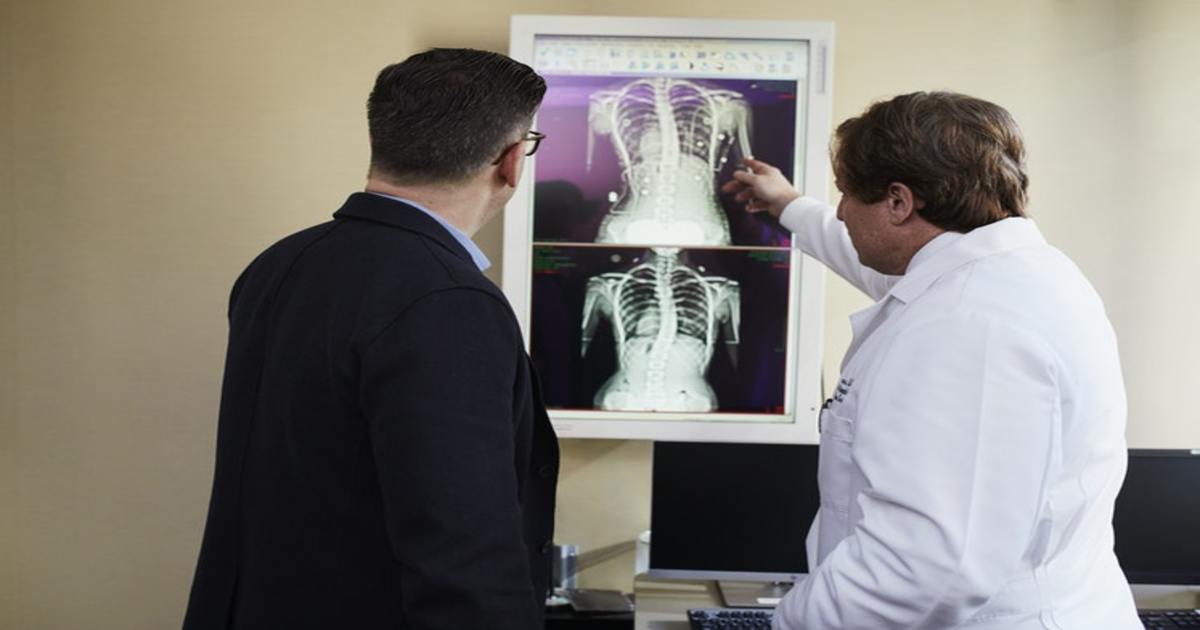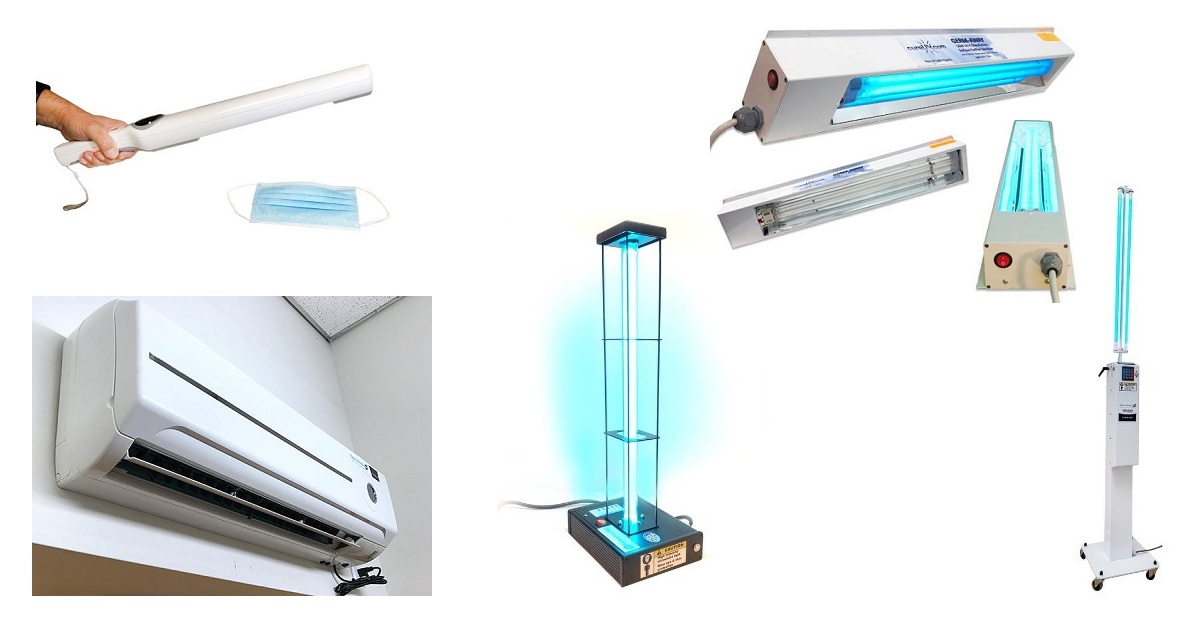
Health Technology, Digital Healthcare
Article | August 16, 2023
In today's uber-fast-paced world, the human race, in general, has gotten highly comfortable running on all cylinders in the rat race of life, especially people in India. Our country is a land where opportunities are aplenty, and competition is ever-present, which makes every day life so tedious and constant that taking a breather is something that people can rarely afford. This has led to increasing cases of anxiety, depression, high blood pressure and insomnia. These cases rose to such high numbers that it gave way to one of India’s most prominent industry sectors: The Wellness Industry.
Though the industry captured global attention between 2015 and 2017, a study conducted by McKinsey & Company found that the wellness industry is currently valued at $1.5 trillion globally. This sudden boom can be attributed to the realisation that it is more important to remain healthy than getting healthy. Furthermore, the report, produced after analysing 7500 consumers in six countries (including India), has offered keen insights into consumer behaviour. When it comes to wellness consumers, their trends can be grouped into six categories:
Health: People are now investing in many remote medical devices that can constantly monitor their state of well-being. With the increase in popularity in digital wearables, telemedicine, and remote patient monitoring services, this trend is bound to increase.
Fitness: People are exercising more. Whether it’s jogging, going to the gym, investing in a pedometer, FitBit, etc., there has been a steady increase in people exercising more.
Nutrition: Dieting has always been a significant part of being healthy. An increase in dietary food, supplements, nutrition coaches can be observed in recent years.
Aesthetics: With a major chunk of India’s youth population getting invested in their social media, notably the pictures that they post, aesthetic well-being has seen a sharp increase. This includes investments in specific Athleisure clothing apparel (Nike, Addidas, Puma), skincare products (collagen supplements, face masks), and plastic surgery.
Sleep: Burning the midnight oil is counterproductive. There has been a steady increase in consumers willing to invest in sleep medications, specialised mobile applications that track their sleep and the state of their sleep, ASMR generating devices, White noise devices, and other products that can enable a consumer to maintain a healthy sleep cycle.
Mindfulness: Introspection, understanding the body and its processes to the molecular level, and figuring out ways to implement clarity of thought and methods for improving focus have been huge draws for the wellness industry. Furthermore, with central government’s schemes like AYUSH and the introduction of International Day of Yoga by the United Nations, this particular trend has seen enormous growth.
Impact of these trends on the future of Indian wellness industry
Organic Products: According to APEDA, India has become one of the largest producers of organic products. A growing number are actively investing monthly in organically grown produce, meat that is organically processed, oil that is wood-pressed or cold-pressed, cosmetics made from organic materials, and clothes made from pure cotton instead of manufactured materials. People becoming more conscious of what they put in their bodies has led to a steady increase in organic shops across India.
Exercise, Dieting & Nutritional Supplements: From using simple Calcium supplements and energy drinks to adhering to a strict diet regimen, today’s consumers are genuinely worried about falling sick. This has led to an increase in purchasing supplements. Another trend can be observed where an increasing number of consumers have started buying vitamin, Zinc, and iron tablets, to shore up immunity. Furthermore, Indians have begun consuming gluten-free cereal, cold-pressed juices, Kale products, Avocados, and other food products recommended to be healthier alternatives. Indians have also become BMI-conscious, and an increasing number of them have started to invest in gyms, yoga/cardio classes, exercise-wear, sports wearables, and other products that can enable a person to work out more effectively.
Constant Increasing Demand for Oxygen: Even before the second wave of the COVID-19 pandemic, getting access to 99% breathable oxygen has pure oxygen was a necessity considering the rising concerns of pollution in Indian cities. As per the ‘World Air Quality Report, 2020’ prepared by Swiss organisation, IQAir, 22 of the world’s 30 most polluted cities are in India, with Delhi being ranked as the most polluted capital city globally.
Moreover, people who indulge in extreme physical workouts exercise, or suffer from high-altitude sickness, need oxygen handy to maintain their wellbeing. In India, prominent wellness companies like UCS Wellness Pvt Ltd have made significant strides to ensure that every individual has access to oxygen through their innovative specially outfitted 18-litre aluminium-bottled oxygen cans of 18 litres under their brand gO2therapy. With the pollution rate showing no signs of slowing down, and the steady increase in demand for oxygen, it would be no surprise to find every household medical kit fitted with a portable oxygen cylinder.
Transitioning to Digital Platforms: With the increase in popularity of Telemedicine and Remote-patient monitoring, healthcare and the wellness industry are gaining an aggressive online presence. There are many online exercises/online videos, fitness apps, meditation apps, motivational apps, power coaches, and so much more. Indians find it easier to use these online tools combined with a digital wearable to keep their well-being in the best of conditions.
Investing in Social Media Influencers: With the increase in online dependence, the voice of social media influencers is soon to be gospel when it comes to maintaining a fit body and healthy mind. Much like how mainstream celebrities endorse various products, the wellness industry has seen great rewards in deploying online influencers to support their products. Typical examples can include a famous workout specialist advertises particular apparel, gadget, energy drink, or brand of Whey Protein distributors as part of their video.
Alternatives to Allopathy: In the Indian market, the wellness industry has seen a shift in paradigm where an increasing number of consumers opt for Siddha, or Ayurveda substitutes, instead of conventional medicine. This is seen more in the age group of 40+. This particular age group has patients with a long history of high BP, high cholesterol, and other ailments that require continuous monitoring and medication. They feel that the healthier choice is in traditional medicine or treatments like Panchakarma, Ayurveda, or Siddha. Conventional medication provides them with little to no side effects, which is the primary reason for its increasing popularity.
India is expected to become a wellness hub in the global community following a 12% growth per annum. The Make in India initiative is expected to bring in more investments and opportunities in this sector. The Ministry of AYUSH, with a separate department for Yoga, has been exempted from service tax. A budget of around ?3,400 crores has also been earmarked to be spent over the next five years to help set up and strengthen Ayush Wellness Centers under the National Ayush Mission. This has sparked an increase in startups and businesses focusing on the wellness sector.
Meanwhile, the global pandemic is also giving rise to a new consumer behaviour called wellness rebound where they are becoming more health-conscious and striving towards regaining their health soon after recovering from an illness. Considering the aftermath of the pandemic, the aggressive implementation of technology, and the constant consumer market in India, it can be inferred that the wellness industry will evolve and expand further with little to no backslide.
Read More

Healthtech Security
Article | November 29, 2023
COVID-19 has been a catalyst for change, with the diagnostics industry taking centre stage and rising to the challenge of a global pandemic. One of the silver linings of this mammoth task has been the unprecedented time and focus dedicated to finding new technologies and solutions within the sector.
The lessons learned from the pandemic now need to be taken forward to improve breast and cervical cancer detection, prevention and treatment across the UK over the coming years.
In the more immediate term, the diagnostics industry, alongside public health leaders, faces a daunting backlog as screening programmes for breast and cervical cancer were put on pause for months. These two life-saving tests have been some of the most overlooked during the pandemic and getting back on track with screening is critical as we start to turn the corner. We believe innovation in diagnostics, particularly artificial intelligence guided imaging, is a key tool to tackle delays in breast and cervical cancer diagnosis.
The scale of the backlog in missed appointments is vast. In the UK, an estimated 600,000 cervical screening appointments were missed in April and May 2020. And an estimated 986,000 women missed their mammograms, of which an estimated 10,700 could be living with undiagnosed breast cancer. It is clear that hundreds of thousands of women have been affected as COVID-19 resulted in the reprioritisation of healthcare systems and resource allocation.
Both cervical and breast cancer screening are well suited for digital technologies and the application of AI, given both require highly trained medical professionals to identify rare, subtle changes visually –a process that can be tedious, time-consuming and error prone. Artificial intelligence and computer vision are technologies which could help to significantly improve this.
What does AI mean in this context?
Before examining the three specific areas where digitisation and AI can help, it is important to define what we mean by AI. It is the application of AI to medical imaging to help accelerate detection and diagnosis. Digitisation is the vital first step in implementing an AI-driven solution – high quality images demand advanced cloud storage solutions and high resolution. The better the quality of the input, the more effectively trained an AI system will be.
The first area where AI-guided imaging can play a role is workflow prioritisation. AI, along with increased screening units and mammographers, has the potential to increase breast cancer screening capacity, by removing the need for review by two radiologists. When used as part of a screening programme, AI could effectively and efficiently highlight the areas that are of particular interest for the reader, in the case of breast screening, or cytotechnologist when considering cervical screening.
Based on a comparison with the average time taken to read a breast screening image, with AI 13% less time is needed to read mammogram images, improving the efficiency with which images are reviewed. This time saving could mean that radiologists could read more cases a day and potentially clear the backlog more quickly.
For digital cytology for cervical cancer screening, the system is able to evaluate tens of thousands of cells from a single patient in a matter of seconds and present the most relevant diagnostic material to a trained medical professional for the final diagnosis. The job of a cytotechnologist is to build a case based on the cells they see. Utilising these tools, we are finding that cytotechnologists and pathologists are significantly increasing their efficiency without sacrificing accuracy to help alleviate the backlog of cervical screening we are seeing in many countries.
Prioritising the most vulnerable patients
Another key opportunity is applying AI to risk stratification, as it could help to identify women who are particularly at risk and push them further up the queue for regular screening. Conversely, it would also allow the screening interval for those women at lower risk to be extended, creating a more efficient and targeted breast screening programme.
For example, women with dense breast tissue have a greater risk factor than having two immediate family members who have suffered from breast cancer. What’s more, dense breasts make it more difficult to identify cancerous cells in standard mammograms. This means that in some cases cancers will be missed, and in others, women will be unnecessarily recalled for further investigation.
A simple way to ensure that those most at risk of developing breast cancer are prioritised for screening and seen more regularly would be to analyse all women on the waiting list with AI-guided breast density software. This would allow clinicians to retrospectively identify those women most at risk and move them to the top of the waiting list for mammograms.
In the short term, to help tackle the screening backlog, prior mammograms of women on the waiting list could be analysed using the breast density software, so that women at highest risk could be seen first.
Finding new workforce models
Being able to pool resources will allow resource to be matched to demand beyond borders. Globally, more than half a million women are diagnosed with cervical cancer each year and the majority of these occur where there is a lack of guidance to conduct the screening programme. The digital transformation of cervical screening can connect populations that desperately need screening to resources where that expertise exists. For example, developing countries in Africa could collect samples from patients and image these locally, but rely on resources in the UK to support the interpretation of the images and diagnoses. Digital diagnostics brings the promise of a ‘taxi-hailing’ type model to cervical cancer screening – connecting groups with resources (drivers with cars) to those who are in need (passengers): this is an efficient way of connecting laboratory professionals to doctors and patients around the world.
It’s going to take many months to get cancer screening programmes up and running at normal levels again, with continued social distancing measures and additional infection control impacting turnaround times. But diagnostic innovation is on a trajectory that we cannot ignore. It will be key to getting cancer screening programmes get back on track. AI is a fundamental piece of the innovation puzzle and we are proud to be at the forefront of AI solutions for our customers and partners.
Read More

Health Technology, AI
Article | July 18, 2023
The healthcare industry is experiencing rapid shifts. Some of this is due to the current pandemic, but much of this evolution was happening even before the COVID-19 outbreak. Understanding and embracing the introduction of new technology into the market will be important for healthcare professionals and patients alike. Here are some of the trends worth keeping tabs on:
Read More

Article | September 3, 2020
As COVID-19 rages on, warning sirens have sounded of late amid a flurry of headlines surrounding Ultraviolet-C (UVC) light device safety issues. Rightfully so, as the current pandemic has ushered in a veritable “wild west” of UVC gadget deployments with subpar consumer safeguards, instructions or guidance. So important are the concerns amid this rapidly proliferating product sphere, the FDA recently issued a consumer advisory regarding UVC light technology that’s applicable for industrial, business, travel and residential use.
Once largely a germicidal method leveraged in hospital, industrial and other commercial settings for its extreme efficacy, today’s breed of UVC technologies are small, portable and inexpensive enough to be making their way into businesses of every type across the globe—and even traverse with individuals while they’re out and about. This, as generalist retailers like Amazon and Walmart have joined the fray in their attempts to divert market share from the more specialized, expert-driven, safety-focused UVC purveyors.
While germ-killing UVC technologies do proffer tremendous advantages and results for users—serving as a potent tool for easily and effectively eradicating harmful viruses, bacteria, pathogens and microorganisms—there are a number of considerations a business (or employee) should heed before procuring and using such a powerful device. This includes, but is certainly not limited to, why; when; where; and how it will be used—variables that impact safety and risk concerns related to UVC wavelength, dose and duration of radiation exposure.
Shopping in this category can be equally overwhelming. One need only Google “UVC lamps,” which delivers nearly 100,000 results, to realize how bloated this category has become. Amid the chaos, I did happen upon a highly targeted, category-dedicated source wholly dedicated to UVC technologies: CureUV.com. This company draws on over 20-years of expertise in the design, development and provision of technologically advanced UV products and solutions. Today, they are a premier provider of germicidal UVC light solutions for commercial, industrial, portable, residential and even water applications.
While its form factor catalog is copious, below are a few of CureUV’s more popular UVC devices starting under $90 that proffer chemical-free disinfection, which can help ensure your spaces remain free of illness-causing microbial contaminants like viruses, bacteria, mold and other fungi:
Rechargeable Handheld UV Sanitizer Wand With Digital Timer
Here's a highly portable way to eliminate germs and have a cleaner environment no matter where you may be. This powerful UVC illumination system, which retails around $89, eradicates up to 99.9 percent of viruses, bacteria, germs, mold, dust mite eggs and flea eggs on surfaces. This non-chemical option adds an extra layer of safety to you with no hazardous residue. It contains a 6-inch UVC lightbulb allowing for a wider coverage of area as well as accelerating sanitation in the process. A built in timer inside the device allows you to keep track of desired dosage creating precise sanitation sessions-- anywhere from 5 to 60 minutes to indefinite. Its silent operation allows for a noise free solution for sanitation, and sleek and cordless and lightweight design is perfect for travel however near or far--daily around town or those hotel visits. Sanitize how you want in your desired target area or on your personal items keeping them germ free. An internal rechargeable battery saves money on replaceable battery purchases as compared to various other handheld wands on the market.
GermAwayUV 18-Watt Handheld UVC Surface Sanitizer
This device offers reliable and highly portable sanitizing performance at an entry-level price. Indeed, at under $120, this is an affordable, dual-bulb, handheld UV sanitizer that still maintains power levels similar to more industrial UV surface sanitizers. This lightweight and ergonomically designed 18-watt UVC sanitizer will give you much peace of mind. It has a 6-foot cord adequate for most applications, but the sanitizer will run easily with virtually any simple power extension. Its two 9-watt UVC sanitizer bulbs are guaranteed to produce UV light in the 253.7 nanometer (nm) wavelength, which has been consistently proven to eliminate all illness-causing microorganisms. It's the perfect tool to disinfect high use and traffic areas, as well as locations where bacteria and viruses congregate like bathrooms, door handles, seating areas and cooking/dining spaces. It'll prevent the spread of harmful bacteria and microorganisms, or simply add an extra layer of cleanliness and protection to your cleaning procedures. It comes bundled with protective amber UV safety glasses.
Deluxe GermAwayUV 95-Watt UVC Surface Sanitizer with Cage
With a 95-watt bulb, this chemical-free, tabletop UV room and surface sanitizer is the strongest of its kind. It will result in effective room sanitation by killing up to 99.9 percent of bacteria, viruses, mold spores, yeasts, C. diff, odors and other harmful microorganisms. With a simple touch of a button you'll be able to leave the room while the entire space is cleaned and disinfected in a matter of minutes. The device has five time settings: 10, 20, 30 and 60 minutes; and hold for indefinite run time. After the selected dosage time has elapsed, the device will automatically shut off. You can use it regularly to ensure a consistently clean room.
Heavy Duty Dual Bulb 72-Watt HVAC UV Air Purifier
Suitable for use anywhere, including schools, offices, work-floors and medical rooms to sanitize air and environmental surfaces, this device is effective in small and large rooms/buildings alike, up to 2,400 square feet. With a powerful 72-watt bulb and a standard electrical unit, you can insert this premium UVC bulb into any HVAC system as an easy add on to sanitize the air in the system. Typical air purifier units and HVAC systems are definitely useful, designed to filter and ventilate air well. But even the finest filters can’t stop atomic sized bacteria and viruses. This device is therefore a great extra add on because it really does target and stop bacteria and viruses from circulating. It sanitizes and disinfects air passing through the HVAC system. Its 72-watt bulb emits UVC light of 254nm and is the most powerful bulb. Most devices are typically only effective in small rooms, but with this level of wattage you can use this device in large rooms and building types. At its wavelength, the emitted light is able to penetrate and kill the DNA of atomic sized organisms that create problems for humans. UVC emission also acts to eliminate mold spores, yeast and fungi. So, inserting this unit device into your existing HVAC system ensures that not only will the air that moves through your building be ventilated, it will also be irradiated and disinfected as it passes over the bulb. Instead of just filtered air in your system, you’ll end up with sanitized, healthy air. Add on (retrofit) features like this one are great because you can just insert them into an already installed and operating HVAC system with minimal additional running costs. This device is easy to install and is capable of DIY application. Other available HVAC retrofit air sanitation and purification solutions include a coil scrubber or 36-watt HVAC UVC air purifier.
GermAwayUV High Occupancy Wall Mountable 150-Watt Air Purifier and Sanitizer
This is a safe and efficient way to sanitize and disinfect the air in high traffic occupied areas. Simply mount the sanitizer on the wall as you would hang a TV or mount a standalone AC system and let the system do its magic. The air purifier will use its powerful, yet quiet, fan to continually cycle all of the air in the room through the system. Once the air does so, it will be met by a quintuple filtration and sanitation system that culminates in a full 150-watt UVC germicidal irradiation. Put this system in a busy hallway, a crowded restaurant, a veterinary clinic with high traffic, a busy office, etc… and it will eliminate bacteria, viruses and harmful pollutants as quickly as possible without exposing anybody to any UVC rays. It proffers optimum perf
Read More